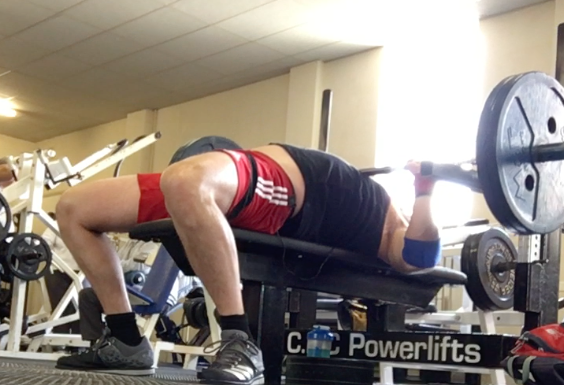A Quick Guide To Bench Press Safety
The bench press is a pushing exercise that is primarily used to strengthen the chest muscles, although it's benefits reach far beyond the chest "sculpting" effect it is most known for.
It is a good exercise and certainly has its place in a well designed exercise programme for men and women.
Correctly performed weight training is safe and I have written about the relative safety of weight training in comparison to other exercise.
The key emphasis should be on the words correctly performed.
Although errors in performing other exercises could lead to an injury, the time a lifter is at the greatest danger is during the bench press, where the weight is held directly over your throat.
Fortunately, by following just a few simple steps you can drastically reduce these risks.
Whether you choose to recruit the services of a professional coach like myself or not I do believe this simple info is so important it should be known to everyone gym goer free of charge.
bench press safety
in 3 simple steps
Byron, bench pressing with safety arms set and no collars on the bar.
There are just 3 simple steps to a safe bench press.
THUMBS. Always wrap your thumbs around the bar. There is a trend to bench with a thumbless grip, this is highly dangerous as the bar can slip out of your hands.
SAFETY ARMS. Use a bench press station or rack that enables you to set the catcher arms. In the picture above you can see I have set those arms so that if I cannot recover from a rep I just set the bar down safely.
COLLARS. Do not collar the bar. This means the plates will not be locked to the bar. In the event that the bar is on your chest and you cannot lift it you would tilt the bar to one side. The plates on the lowered side would slide off the bar under gravity and then the bar would flip off your chest under the weight of the remaining plates freeing you.
CONCLUSION
People get into trouble with the bench press when they lose control of the bar. This happens because they did not wrap their thumbs and the bar slips out of their grip and hits them, or the weight is too heavy and they cannot raise it.
The bar ends up on their chest. If they have collared the bar then they cannot tilt it to free themselves, they become trapped and as they fatigue the bar rolls onto their throat with terrible consequences.
You may argue, why not just avoid barbell training altogether and use safer resistance machines?
I have written about the benefits of barbells vs. machines and in short free weights blow just about everything else out of the water and barbells in particular vastly outperform other forms of resistance training.
Please use the link below to share this article online and help to keep the bench press a safe exercise.


